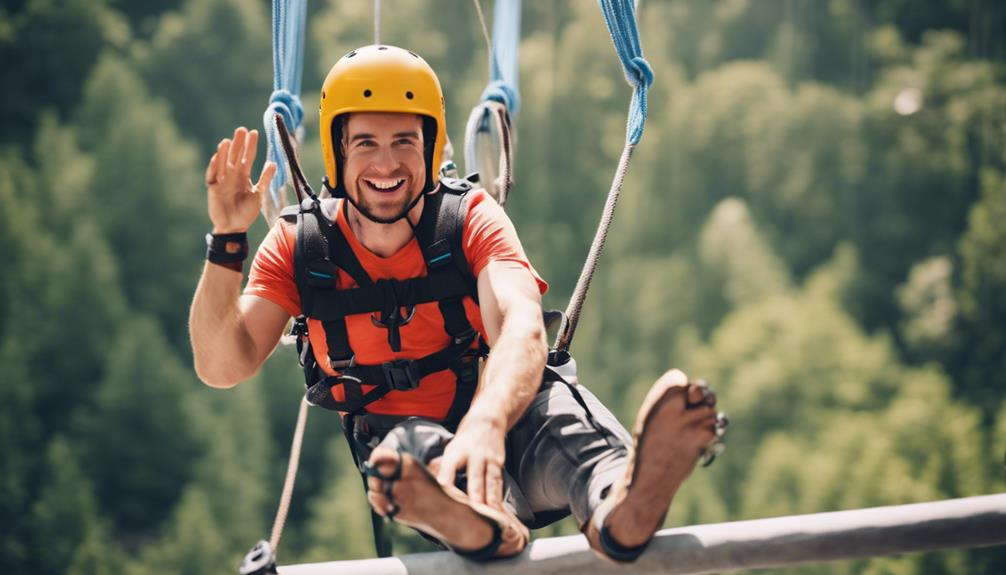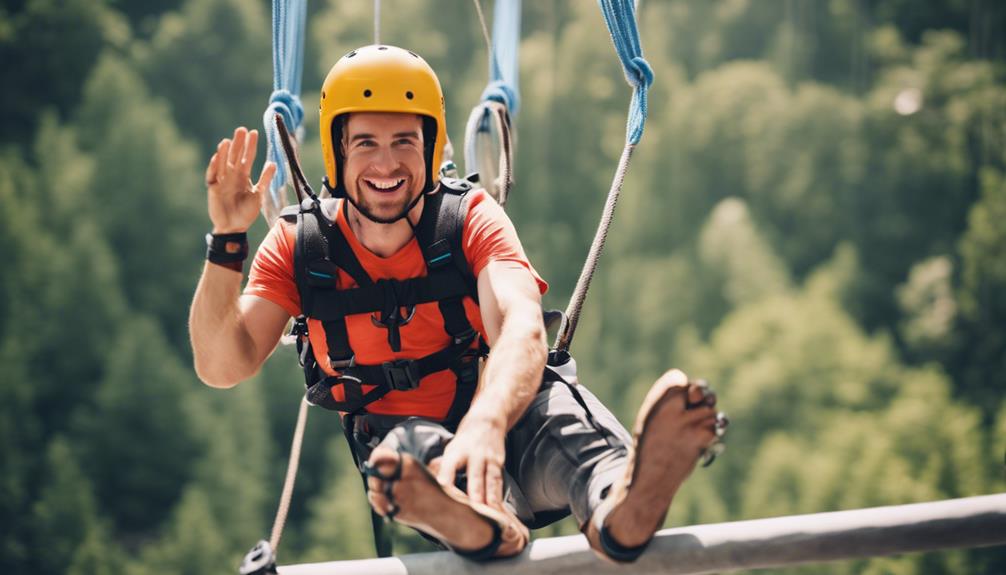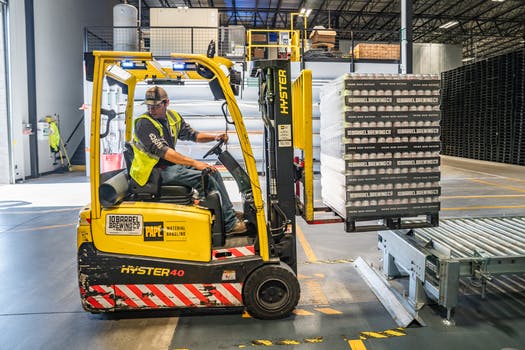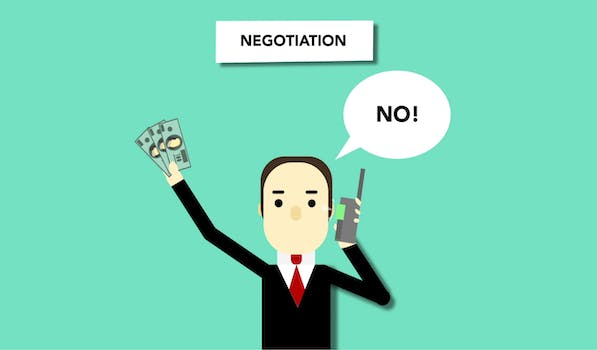A Comprehensive Guide: How To Start A Zipline Business
Have you ever dreamed of starting your own zipline business? Well, get ready to soar to new heights! Starting a zipline business is an exciting adventure that requires careful planning and decision-making.
But don’t worry, we’re here to guide you every step of the way. From finding the perfect location to creating an unforgettable customer experience, we’ll help you create a business that will leave your customers begging for more.
Yes, you can start a zipline business. Ensure to obtain the necessary permits, prioritize safety standards, and develop a strong financial plan1. Partnering with local businesses can also help in expanding your customer base and enhancing the adventure experience.
So grab your compass and get ready to embark on the journey of a lifetime. Let’s dive in and discover the essential elements that will set your zipline business up for success!
Market Analysis

You need to identify the strengths of your competitors and assess the demographics of your target audience. Understanding what makes your competitors successful can help you differentiate your zipline business effectively.
Identify Competitor Strengths
Are you curious about your competition in the zipline industry? Let’s take a closer look at their strengths and how you can learn from them to improve your own zipline business.
Here are some key areas to explore:
- Pricing strategies: How do your competitors price their zipline services? Understanding this can help you position your business competitively.
- Target demographics: Who are your competitors targeting? Knowing their customer base can give you insights into potential untapped markets or niche demographics you can cater to.
- Customer reviews: What’re customers saying about your competitors? Analyzing their reviews can give you valuable feedback on what they’re doing well and areas where you can improve.
- Equipment quality: How does your competitors’ equipment compare to yours? Assessing their equipment can help you enhance your own offerings and ensure you’re providing the best experience for your customers.
- Marketing tactics: What strategies are your competitors using to promote their zipline business? Studying their marketing tactics can inspire innovative approaches for promoting your own business effectively.
- Location: Where are your competitors located? Considering their zipline business location can help you select a strategic site for maximum visibility and accessibility.
Assess Target Demographics
Want to start a zipline business? It’s important to know who your potential customers are so you can tailor your offerings to them. Here are some things to consider:
- Who are your potential customers? Think about their age, income levels, and interests.
- What’re the tourism trends in your area? Do people like adventure activities like zip lining?
- Is your location accessible to different demographics, like families, thrill-seekers, and tourists?
- How much money do your potential customers have to spend? What’re their spending habits?
- Who are your competitors? How can you stand out from them?
Understanding your target demographics is crucial for making your zipline business a success. By knowing who your potential customers are and what they want, you can create offerings that meet their needs and preferences. So, do your research and get to know your target market!
Business Planning
When planning your zipline business, drafting a solid blueprint is essential. Consider your financial projections carefully, ensuring you have a clear understanding of your funding needs.
This step sets the foundation for a successful venture.
Drafting Your Blueprint
Are you thinking about starting your own zipline business? Well, let’s talk about how to make it a success! The first thing you need to do is conduct a market analysis. This means figuring out if there’s a demand for your zipline business in your area. Here’s what you need to do:
- Feasibility Study: Take a close look at the market potential and demand for a zipline business in your area. Is there a need for this kind of adventure activity? Will people be interested in trying it out? This will help you determine if starting a zipline business is a good idea.
- Business Plan: Once you’ve figured out that there’s a market for your zipline business, you need to develop a detailed business plan. This plan should include everything from the safety procedures you’ll have in place to the staffing requirements and effective marketing strategies to attract customers.
- Safety First: Safety is of utmost importance when it comes to operating a zipline business. Make sure you have comprehensive safety protocols in place to prioritize the well-being of your customers. This will help you build trust and ensure that people feel safe and secure while enjoying the thrill of ziplining.
- Know the Regulations: It’s important to understand the specific regulations for zipline operations in your area. Make sure you comply with all zoning laws and any other requirements set by local authorities. This will help you avoid any legal issues and ensure that your business is operating within the law.
- Marketing Strategies: To attract customers to your zipline business, you need to implement creative marketing strategies. Think about what makes your zipline business unique and highlight those selling points in your marketing efforts. Whether it’s the stunning views or the adrenaline rush, find ways to captivate potential customers and get them excited about trying out your zipline adventure.
Financial Projections & Funding
So how to start a zipline business you might think? Are you thinking about starting your own zipline business? Well, let’s talk about the financial side of things. Financial projections are super important when it comes to planning for your business. They help you estimate how much money you’ll make, how much you’ll spend, and whether or not your business will be profitable.
To create accurate financial projections, you need to develop a detailed financial plan. This plan will help you forecast costs and budget for things like equipment, construction, insurance, marketing, and other expenses. It’s essential to know how much money you’ll need to keep your business running smoothly.
Now, let’s talk about funding. Starting a zipline business can be costly, so you might need some financial assistance. There are a few options you can explore:
- Loans: You can apply for a loan from a bank or other financial institution. This can provide you with the money you need to get your business off the ground.
- Grants: There are organizations out there that offer grants to businesses. These grants don’t need to be repaid, but they can be competitive to obtain.
- Investor Capital: If you’re open to sharing ownership of your business, you can seek out investors who are willing to provide funding in exchange for a stake in your company.
When it comes to funding, it’s important to have a solid financial plan in place. This will show potential lenders or investors that you’ve thought through the financial side of your business and have a plan for success.
Brand Development

Crafting your brand identity, logo, and design essentials is crucial for setting your zipline business apart. Define a unique selling proposition that resonates with your target audience’s sense of adventure.
Create a memorable visual identity that reflects the thrill and excitement of zip lining.
Crafting Your Identity
Are you looking to make your mark in the exciting world of ziplining? Well, the key to success is creating a strong and unique brand identity. Let’s dive into some tips on how to do just that:
- Tell a captivating story: Your brand story should connect with the adventurous spirit of your target audience. Paint a vivid picture of the thrilling experiences they can expect from your zipline business.
- Choose a catchy name: Your brand name should be memorable and reflect the excitement of zipline adventures. Think about words that evoke a sense of thrill and adventure.
- Design a memorable logo: Your logo is like the face of your brand. Make it visually appealing and easy to recognize. Consider incorporating elements like ziplines or mountains to reinforce the adventurous nature of your business.
- Develop a consistent brand voice: Your brand voice is how you communicate with your audience. Make sure it’s authentic and resonates with your target market. Are you laid-back and fun? Or maybe you’re more professional and informative. Whatever it is, be consistent in your tone across all channels.
- Be unique: Stand out from your competitors by highlighting your unique selling proposition. What sets your zipline business apart? Do you offer longer, faster, or more scenic ziplines? Make sure your customers know what makes you special.
- Coherence is key: Ensure that all your brand elements, from your name to your logo to your voice, are cohesive. This will create a strong and unified image in the minds of your customers.
- Engage your audience: Use captivating visuals, such as photos and videos, to showcase the excitement of ziplining. Share customer testimonials and stories to build trust and credibility.
Logo and Design Essentials
Are you ready to create an amazing logo for your zipline business? Having a memorable logo is important for attracting customers and standing out from the competition. But where do you start? Don’t worry, we’ve got you covered!
Here are some tips to help you design a logo that captures the excitement and thrill of ziplining:
- Think about what makes ziplining so thrilling. Is it the adrenaline rush? The breathtaking views? Try to incorporate these elements into your logo design.
- Consistency is key. Make sure your logo matches the overall look and feel of your brand. This will help customers recognize and remember your business.
- A catchy brand name can make a big difference. Think about a name that reflects the excitement of ziplining and sets you apart from other businesses.
- Tell a story with your brand. Develop a unique brand story that resonates with customers and enhances their overall experience. This will help create a connection and make your business more memorable.
- Show off your unique selling proposition. What makes your zipline course special? Whether it’s the longest, fastest, or most scenic course, make sure your logo and design reflect this unique feature.
Legal Framework
Starting a zipline business is exciting, but it also involves some legal requirements. Don’t worry, though! I’m here to guide you through the process. Let’s break it down into simple steps:
- Permits and Licenses:
- You’ll need building permits for your zip line equipment and land use permits to comply with local regulations.
- Obtain a business license to legally operate your zipline business.
- Don’t forget to get liability insurance to protect your operation.
- Zoning Laws:
- Research zoning laws that could affect where you can build your zipline.
- Make sure your zipline complies with any restrictions or guidelines set by the local authorities.
- Register Your Business:
- Register your business entity to establish it as a legal entity.
- Obtain an Employer Identification Number (EIN) from the IRS.
- Safety Standards:
- Safety is crucial for your zipline business. Follow all safety standards and regulations set by relevant authorities.
- Regularly inspect and maintain your equipment to ensure its safety and reliability.
Financial Setup

Are you ready to soar to financial success with your zipline business? Building a strong financial foundation is key to your venture’s triumph. Let’s dive into some helpful tips to make this happen:
- Choose the right bank: Look for banks that offer services specifically for businesses like yours. They can help you set up your financial setup efficiently.
- Get your documents in order: Prepare the necessary documents to open a business bank account. This will make managing your operational finances a breeze.
- Secure initial capital: Consider funding sources such as loans or grants to get the ball rolling. This will help cover the costs of starting your zipline adventure.
- Create a financial plan: Develop a detailed plan that outlines your budget, revenue projections, and expense management strategies. This will keep you on track and help you make informed financial decisions.
- Explore economic development programs: Look for programs that offer support and resources specifically tailored to financial planning in the zipline industry. They can provide valuable insights and guidance.
Equipment Acquisition
When acquiring equipment for your zipline business, focus on selecting quality gear that ensures the safety and satisfaction of your customers.
Essential safety gear like harnesses, helmets, and braking systems should be prioritized to uphold industry standards and protect participants.
Understanding the importance of these equipment essentials is crucial for a successful ziplining operation.
Selecting Quality Gear
Are you thinking of starting your own zipline business? Well, one of the most important things to consider is the quality of the gear you use. It’s not just about having fun and thrilling experiences for your customers, but also about their safety. So, how can you ensure that you have top-notch gear? Let’s break it down for you:
- Look for gear that meets industry standards and is designed to last. This means it has undergone thorough inspections and is built to withstand the rigors of ziplining.
- Make sure the gear has the necessary certifications. This is important because it shows that the equipment has been tested and meets all the safety requirements.
- Stick to strict maintenance schedules. Regular maintenance is crucial to keep the gear in good working condition. It ensures that everything is functioning properly and reduces the risk of accidents.
- Investing in quality gear upfront can actually save you money in the long run. When you have gear that’s built to last, you won’t have to spend as much on repairs and replacements.
- Remember that the quality of your gear plays a big role in customer satisfaction. When your customers feel safe and confident in the equipment, they’ll have a better overall experience.
- When sourcing gear, make sure to go with reputable manufacturers. This way, you can be sure that you’re getting reliable and effective equipment.
Safety Gear Essentials
Do you want to make sure riders are safe on your zipline? Well, you need to have the right safety gear! Let me tell you about the essential items you should have.
Helmets: These are crucial for protecting riders’ heads in case of any accidents. Make sure to get high-quality helmets that fit properly.
Harnesses: Riders need to be securely attached to the zipline, and harnesses are what keep them in place. Look for harnesses that are comfortable and adjustable.
Gloves: Ziplining can be tough on the hands, so it’s important to provide gloves for riders. This will protect their hands from friction and give them a better grip on the equipment.
Safety trolleys: These are the devices that riders use to slide along the zipline. Make sure to get safety trolleys that are strong and durable.
Carabiners, pulleys, and lanyards: These are all important components of the safety gear. They help to keep riders connected to the zipline and ensure a smooth and safe ride.
Emergency rescue kits and first aid supplies: Accidents can happen, so it’s important to be prepared. Have emergency rescue kits and first aid supplies on hand to address any injuries or emergencies.
Communication devices: It’s important to be able to communicate with riders and staff in case of any issues. Make sure to have communication devices, such as radios or walkie-talkies, available.
Regular safety inspections and maintenance: To ensure that your safety gear is working properly, it’s important to have regular inspections and maintenance procedures in place. This will help to identify any issues and prevent accidents.
Compliance with safety regulations: Make sure to follow all industry safety regulations and standards when acquiring safety gear. This will ensure that you’re providing the highest level of safety for your riders.
Training for staff: It’s important to train your staff on the proper use and maintenance of safety gear. This will help to ensure that they’re knowledgeable and can provide a safe experience for riders.
Educating riders: Conduct zipline adventure guides to educate riders on safety protocols. This will help them understand the importance of following safety guidelines and ensure a safe and enjoyable experience for everyone.
Marketing Strategies

Are you ready to take your zipline business to new heights? We’ve some amazing marketing strategies that will captivate potential customers and have them lining up to experience the thrill of your zipline adventure.
- Tell captivating stories: Use digital platforms to weave stories that ignite the inner adventurer in everyone. Make your marketing feel like an invitation to embark on an unforgettable journey.
- Understand your audience: Tap into the desires and dreams of your target market. Create a customer experience that lingers in their minds by aligning with what they truly want.
- Focus on the thrill and excitement: Position your zipline business as the ultimate attraction for those seeking adventure. Highlight the adrenaline rush and exhilaration that comes with soaring through the air.
- Stand out in the market: Develop a brand message that evokes a sense of adventure and uniqueness. Differentiate yourself from competitors and make sure your business is the one that stands out in the crowd.
- Consider zipline attraction taxes: Be mindful of any taxes associated with running a zipline business and factor them into your pricing strategies and financial planning. This will ensure sustained growth and profitability.
Business Expansion
Are you thinking about expanding your zipline business? Well, I’ve some exciting ideas for you! By partnering with local businesses, you can grow your customer base and enhance the adventure experience for everyone involved. Let me break it down for you:
- Collaborate on zipline park installations: Working together with local businesses, you can create amazing zipline parks that will attract more visitors. Imagine the thrill of soaring through the air while surrounded by beautiful scenery!
- Share zipline technical support resources: Sometimes, running a zipline business can be challenging. But by partnering with other businesses, you can share technical support resources, making it easier for everyone. You’ll have a team of experts ready to help whenever you need it.
- Jointly develop a zipline marketing plan: Marketing is crucial for any business, and with the help of local partners, you can create a killer marketing plan. Together, you can brainstorm ideas, come up with creative campaigns, and attract more people to experience the excitement of ziplining.
But how can you get started with these partnerships? Well, one way is by creating a detailed zipline business proposal outline. This will help potential partners understand your vision and see the benefits of working together. Don’t forget to accurately estimate zipline project costs too, so everyone is on the same page.
By leveraging these opportunities for growth and cooperation, you can increase your zipline business’s visibility and customer reach. Not only that, but you’ll also offer a more comprehensive and engaging experience for thrill-seekers in your area.
Conclusion
So, now that you have everything set up and ready to go, it’s time to launch your zipline business and start soaring to success!
Remember to focus on safety, create a strong brand, and use effective marketing strategies to stand out in the competitive zipline industry.
Stay dedicated, adapt to challenges, and keep innovating to ensure your business thrives.
Good luck on this exciting journey ahead!
Have you ever thought about starting your own zipline business? Share your thoughts and experiences in the comments below!







